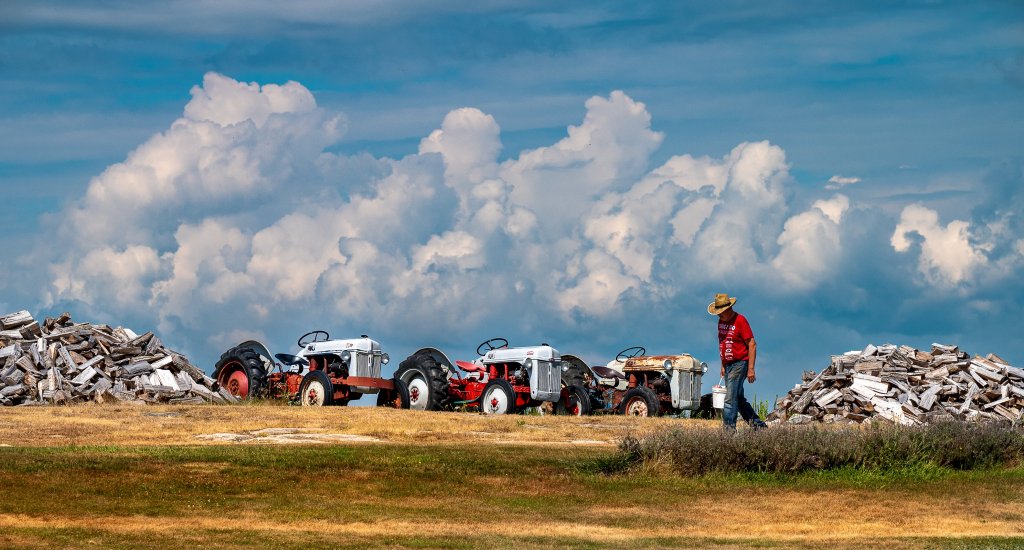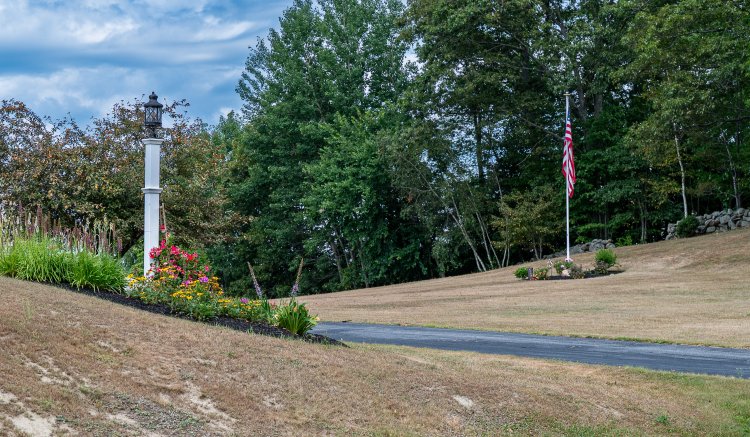
More than a third of Maine is now in moderate drought thanks in part to weeks of dry weather and extreme heat, according to data released Thursday by the U.S. Drought Monitor, with much of the rest of the state facing conditions just shy of an official drought.
The flash drought conditions developed in a matter of weeks and, despite thunderstorms in some areas Thursday, are likely to spread and worsen through the end of the month, said Sarah Jamison, a hydrologist at the National Weather Service office in Gray.
More than 1 million people live in the drought area, which encompasses much of southern, central and Down East Maine. Another 43.6% of the state — including the western mountains, highlands and eastern interior — is experiencing abnormally dry conditions, one step below an official drought. Only the far northern reaches of Maine are still considered to have normal conditions.
“Every one of us has gotten used to these dry, hot spells when your lawn gets a little crispy and the lakes are a little low,” Jamison said. “It’s gone from, ‘My garden needs more watering’ to suddenly seeing water restrictions or more wildfires across the state.”
At least one water district in southern Maine has banned outdoor watering and is asking people to cut back on water usage inside.
As of Thursday, there had been 525 wildfires in Maine this year — including 124 in August alone — and is on track to exceed the recent annual average of 650 wildfires, according to the Maine Forest Service. The dry weather has exacerbated wildfire risks in much of the state.
Maine Forest Service rangers have responded to dozens of wildfires just this week and on Wednesday issued a warning on social media about the very high fire danger. Local fire wardens have stopped issuing burn permits, and officials are asking members of the public to be extremely cautious when burning any material.
Jamison said drought conditions are likely to worsen before they get better. Conditions across Maine started to get a little dry earlier this summer but rapidly declined coming into August because there has been little or no rainfall for much of the state, she said.
Most of Maine is now 3 to 5 inches of rainfall below normal. In July and August, when water needs shoot up, the state needs about 5 inches of water a month, Jamison said.
“When we see 50% of normal rainfall during these crucial windows, that’s when we expose ourselves to these flash droughts because things deteriorate very quickly,” she said.

Over the next week, some scattered showers may develop in parts of the state, Jamison said, as they did Thursday in parts of southern Maine. But she said it won’t be the wetting rainfall — more than a quarter inch of widespread rain — that is needed to make a difference.
“We’re going to hope as we transition into the fall season that things become more active and we start getting more wetting rains,” Jamison said.
WATER CONSERVATION
In a moderate drought, wildfires and ground fires increase, honey production declines, hay and grain yields are lower than normal, and trees, landscaping and fish are stressed, according to the drought monitor.
People may be asked to voluntarily conserve water because reservoir and lake levels are below normal capacity.
The South Berwick Water District this week declared a water emergency and implemented an outdoor water ban. The district is also asking its 3,600 customers to limit indoor water use until further notice.
Ryan Lynch, superintendent for the water district, said its water supplies have not yet fully recovered from a severe drought in 2022. That drought was the only other time in recent years that the district has called for a water ban, he said.

So far, South Berwick customers have cut back their water consumption by 10%, or about 34,000 gallons a day.
“We know that there is a little bit of hardship with this, but we’re doing our best to try to adapt to the times, and hopefully we can get to the point where we don’t have to call for a ban,” Lynch said.
Lynch said climate change is impacting the district, particularly as it seems to be “feast or famine” with rain. To help adapt to the changes, the water district planned to add another groundwater source by October but is now trying to speed up that process.
“We have to change the ways we think about things and do things,” he said. “We think the best thing to do is bring more sources online so we can get through the drought without having to do this again.”
The Portland Water District, which serves over 200,000 people in 11 communities, has not been impacted by the drought. Spokesperson Michelle Clements said the district still has an abundant supply of quality water from Sebago Lake.

WELLS RUNNING DRY
During a drought, there is concern about wells running dry, Jamison said.
According to the Dry Well Survey maintained by the Maine Drought Task Force, seven dry wells have been reported so far this year. The most recent dry well was reported Thursday, according to the survey. Since 2021, the survey has recorded 97 dry wells statewide, including 18 in Cumberland County, 17 in York County, and nine each in Kennebec and Lincoln counties.
The well at Wilderness Miracles Wildlife Rehab in Bowdoin is almost dry, which tends to happen when conditions get really dry, owner Kathi McCue said Thursday. She said she’s never wished so hard for rain and wants “everyone to start doing rain dances.”
Last year, McCue raised $9,500 to help cover the price of a deeper well, but the company she hired to do the drilling said it could take 12 to 15 months to get to her.
In the meantime, McCue is trying to conserve water while doing laundry, dishes and cleaning in the areas where she cares for 140 wild animals, including weasels and raccoons.

“Everybody in our community is bringing us water because they know we need it,” McCue said.
Poland Spring also donated water last year and again this week to the rehab center. McCue said the latest donation from the company will last about a week.
The impact of the drought was also evident Thursday at O’Donal’s Nursery in Gorham, where employees have increased the amount of time they spend watering trees and plants each day, said Dave Remington, a horticulture specialist and vice president of the board.
“I’m surprised we’re not in a severe drought,” he said. “It feels severe to me.”
The heat and lack of rain have taken a toll on the trees and plants at the nursery, Remington said.
“You can see the stress. They start changing colors, they start dropping leaves,” he said. “I’m seeing fall colors already.”

Caleb Goossen, a crop specialist with the Maine Organic Farmers and Gardeners Association, said the impact of drought varies by crop but is particularly hard on shallow-rooted crops like vegetables and hay. When the top layer of soil dries out, the roots can’t reach deep enough to get water.
Many farmers irrigate their fields, but they can run into trouble if the ponds or wells they pump water from run dry. The dry weather so far this year has already reduced the crop yield potential, even before the plants started wilting, Goossen said.
“Some folks might let some crops go as this continues. It may no longer be worth trying to preserve crop quality,” he said. “Each bit of water becomes more and more precious. People may be afraid they’ll pump their well or pond dry.”

We invite you to add your comments. We encourage a thoughtful exchange of ideas and information on this website. By joining the conversation, you are agreeing to our commenting policy and terms of use. More information is found on our FAQs. You can modify your screen name here.
Comments are managed by our staff during regular business hours Monday through Friday as well as limited hours on Saturday and Sunday. Comments held for moderation outside of those hours may take longer to approve.
Join the Conversation
Please sign into your CentralMaine.com account to participate in conversations below. If you do not have an account, you can register or subscribe. Questions? Please see our FAQs.